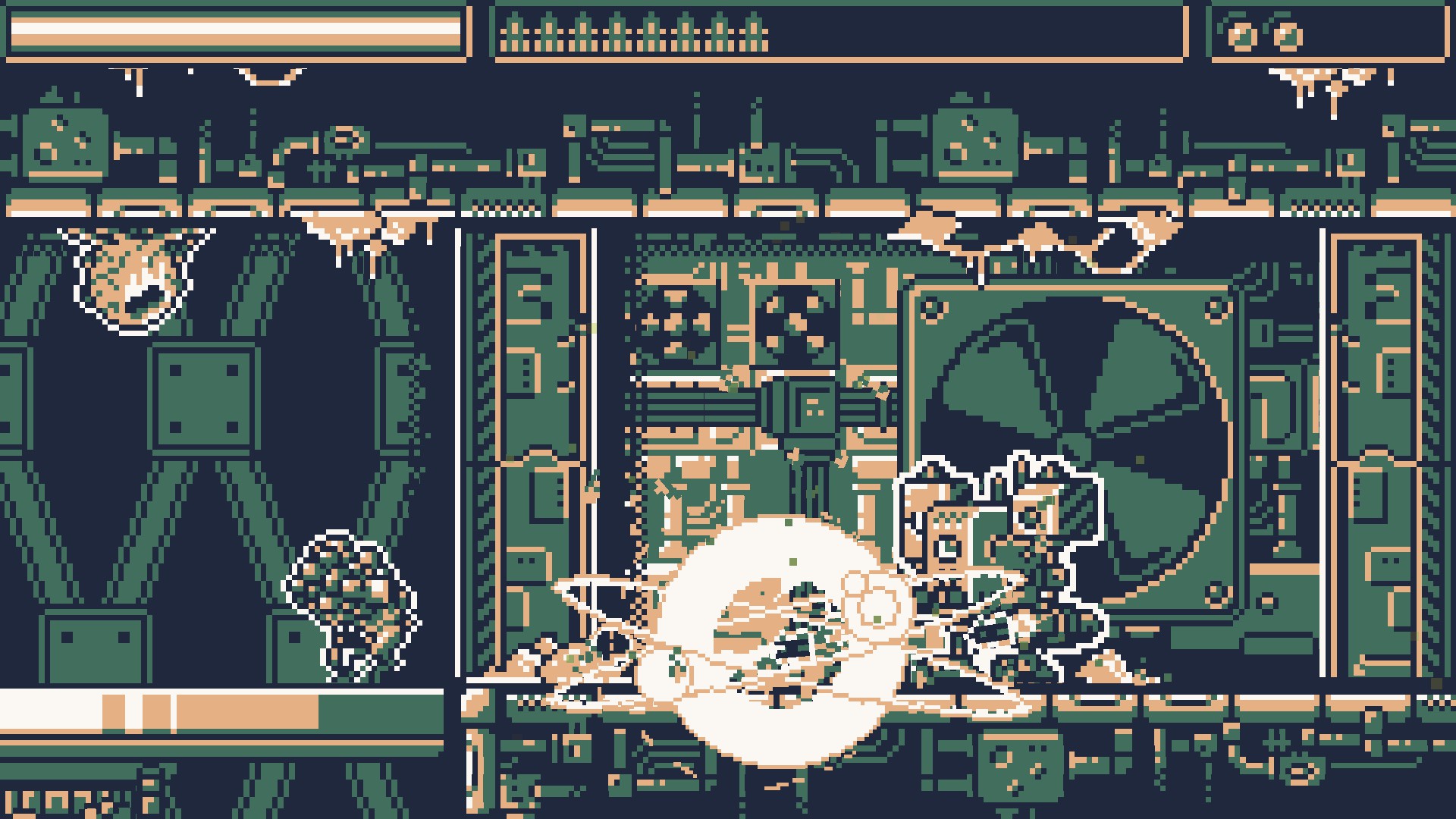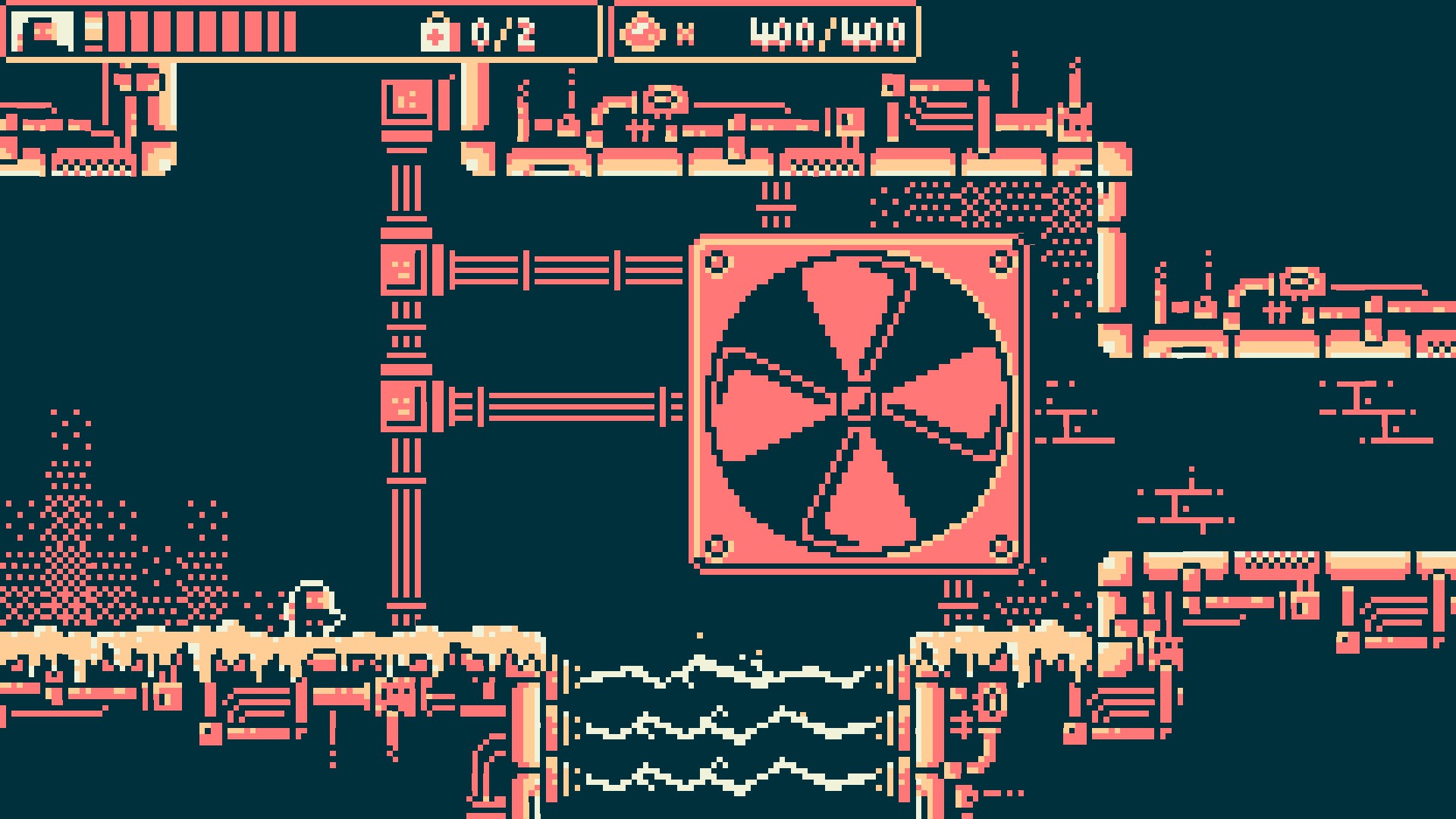B.I.O.T.A. review
2022-06-29 by George P
Reviewed on
PCPlatforms
PC
Developer
small brosPublisher
Retrovibe
Retro Sci-Fi Spectacle
In B.I.O.T.A., you take control of a team of elite mercenaries known as the Gemini II Squad, tasked with investigating the disappearance of a scientific expedition on the asteroid Frontier Horizon. Prior to the events of the game, the asteroid was used as a mining facility for the interests of the mega-company V-Corp. Once you arrive at Frontier Horizon you will realize the urgency of the situation, as an unknown biological organism known as The Agent has taken over the facility and threatens not just your team but also all of human life on Earth. Your mission is to descend to the derelict facility, navigate your way through hundreds of infected rooms, blast off mutated creatures, and uncover the mining colony’s dark secrets. B.I.O.T.A. is a blast from the past with all the modern polish and conveniences that one would expect from a 2022 title. Anyone who played action platformers during the Gameboy era will be immediately met with a rush of nostalgia not just from the visuals and the gameplay, but also from the retro-inspired cutscenes, music, sound design, and general tropes. The themes, story, and setting of the game are all perfectly suited for B.I.O.T.A.’s Metroidvania experience which is well-designed and successfully provides a sense of exploration, mystery, and adventure. Right from the very start, B.I.O.T.A. allows for plenty of free choice in regards to what parts of the facility you want to explore first and how you want to engage with the game’s content. There is not much hand-holding and players are encouraged to figure out mechanics, directions, and progression systems on their own. Still, the game always does a good job of ensuring that the experience never feels overwhelming or convoluted
One of B.I.O.T.A.’s other great highlights is the game’s pixel art style which is fantastic not just in environmental design but also in character design and animation. However, one visual feature that the game prominently uses for its marketing felt a bit off, and that is the ability to switch between color palettes on the go. As you progress through the game’s levels you will unlock dozens of retro-inspired palettes that you can easily switch between from the pause menu. And while this feature seems great for the game’s arcade mode, when it comes to the main campaign I would much rather just play with the color palette the developer intended for each level as there are clearly ones that fit with their corresponding environment and ones that do not really match certain sections at all. Thankfully the game has a slightly buggy “auto- mode” setting that allows you to play the game with the corresponding palettes the developer envisioned for each area

Guns, Explosions, and Monotony
B.I.O.T.A.’s gameplay experience is one that combines three primary elements: explosive runand-gun action, precision platforming, and the wonderous curiosity that Metroidvania exploration inspires. Overall, these elements are polished, well-designed, and complement each other as well as the game’s story and setting. The game’s fundamental mechanics including the movement and combat systems are also smooth and responsive and act as the foundation that allows these three primary elements to shine. The game contains 9 unique mercenaries all of which have different weapons, as well as different special abilities such as grenades, med-packs, energy shields, precision shots, and much more. Gameplay-wise there is no essential reason to change your character but I found that switching between mercenaries kept the experience fresh as each character felt unique due to their distinct guns and abilities. Apart from the core platforming run-and-gun gameplay loop, B.I.O.T.A. also contains special sections that aim to capture the arcade energy of the 90s and offer a fun segment while transitioning between areas. These special events range from piloting a starship in an intense space chase to blowing up everything at sight with the rocket-packed punch of a giant mech, to even traversing the depths of the facility with a submarine. In general, these sections are enjoyable and provide a refreshing break from B.I.O.T.A.’s main content. However, in most cases, these vehicle segments seem to drag on for much longer than they actually should, and because they are much more simplistic and barebones than the game’s core gameplay loop, they can feel tiresome rather than fun and snappy.

Unfortunately, this is an issue that plagues not just these special sections, but also B.I.O.T.A.’s main run-and-gun platforming experience. Of course, being a Metroidvania, the game inherently requires a sufficient number of rooms all interconnected through a complex web of entrances and corridors, with the added element of backtracking. However, as far as pacing is concerned that aspect is not executed very well. On many occasions, the game can feel very repetitive and even tedious as you travel back and forth between rooms that are very similar in the ways they look and play, while also lacking a sufficient amount of interesting enemy variety to keep things challenging and unpredictable. And this repetitiveness is certainly not just an effect of backtracking as it almost felt like certain parts of the game had been added or stretched out just for the sake of making the game longer.

The Retro Question
Ever since the rise of indie games more than a decade ago, many projects have aimed to recapture the spirit of retro games in a vast array of different genres, both aesthetically and mechanically. I believe any designer and developer going through such an endeavour always faces a tough dilemma: the difficulty of balancing the retro inspiration with the new game. If a game gets too close to the retro roots it is trying to replicate, then it can feel like nothing more than a cheap clone; and if on the other side it steers too far away from its inspiration, it may fail to partially recreate the retro experience it is aiming for. B.I.O.T.A. is one of the games that I believe manages to successfully resolve that dilemma. The game successfully captures the magic of the era it is trying to invoke, and most of the modern additions and conveniences are implemented in a way that does not interfere with that nostalgic immersion. But most importantly, through its visuals, charm, and overall vision, B.I.O.T.A. manages to develop its own identity and stand out as a distinct game that feels both fresh and familiar. The one retro element that I thought was the weakest throughout the experience B.I.O.T.A. offered was probably the music. While the sound design is for the most part very well done, the music in B.I.O.T.A. is neither particularly good nor particularly bad. It certainly serves its purpose throughout the game and without a doubt enhances the action-packed experience, but at the same time, it does not include any remarkable tracks and is mostly forgettable.
B.I.O.T.A. is an enjoyable sci-fi Metroidvania adventure with wonderful pixelart visuals that combines nostalgic 90s retro inspiration with a modern vision to forge its own identity. However, the game partially suffers from repetitiveness and monotonous gameplay in certain parts due to stretched out sections and certain game-design choices.